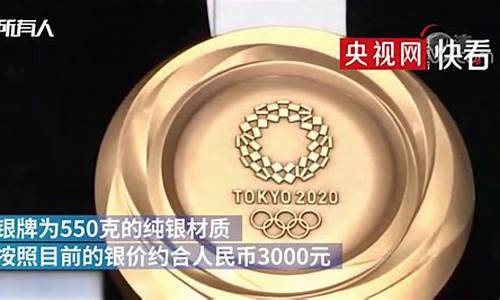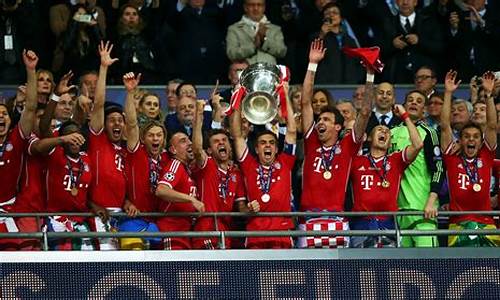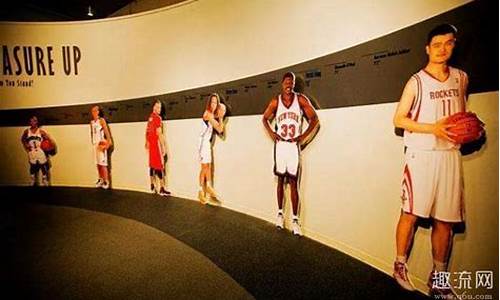您现在的位置是: 首页 > 数据分析 数据分析
vision force羽毛球拍,iforces羽毛球拍
tamoadmin 2024-05-25 人已围观
简介1.To finish the task on time, I think we should _______ and cooperate. A.join together B.conn.2.亚马逊I want FREE Two-Day Shipping 是什么意思,卡西欧3.When I got back home I saw a message pinned to the door,
1.To finish the task on time, I think we should _______ and cooperate. A.join together B.conn.
2.亚马逊I want FREE Two-Day Shipping 是什么意思,卡西欧
3.When I got back home I saw a message pinned to the door, ________ “ Sorry to miss you; will cal..
4.I have nothing in common with是什么意思
5.请帮我分析和翻译下面句子: I took it for granted that you would stay with us.
6.if you never abandon, I will in life and death.对吗?
7.发/i/的单词有那些

Iceland
I INTRODUCTION
Iceland (Icelandic, ?sland), island republic, in the North Atlantic Ocean, about 300 km (about 185 mi) east of Greenland and about 1,000 km (about 620 mi) west of Norway. The country’s extreme dimensions are about 305 km (about 190 mi) from north to south and about 485 km (about 300 mi) from east to west. Iceland has an area of 103,000 sq km (39,800 sq mi).
II LAND AND RESOURCES
In shape Iceland is generally elliptic, and the coastline, with a total length of 4,990 km (3,100 mi), is deeply indented, especially in the west and north. Important embayments on the West Coast are Faxaflói (bay) and Brei?afj?r?ur (fjord). Projecting northwest between the latter and Húnaflói (bay), one of the major indentations on the northern coast, is an irregularly formed peninsula fringed by precipitous cliffs. The peninsular coastline makes up about 30 percent of the total for the island. Volcanic in origin, Iceland consists predominantly of uninhabitable lava tablelands with mountainous outcroppings; the lowlands, situated mainly along the southwestern coast, occupy about 25 percent of the total area. The bulk of the Icelandic population lives along the coast, particularly in the southwest.
Elevations in the uplands average between about 610 and 915 m (about 2,000 and 3,000 ft). Hvannadalshnúkur (2,119 m/6,952 ft), in the southeast, is the highest summit. Nearly 15 percent of the surface of the island is covered by snowfields and glaciers. Vatnaj?kull, a glacier in the southeast, has an area of 8,456 sq km (3,265 sq mi). The island has more than 120 glaciers and numerous small lakes and swift-flowing rivers.
Iceland is remarkable for the number of its volcanoes, craters, and thermal springs and for the frequency of its earthquakes. More than 100 volcanoes, including at least 25 that have erupted in historic times, are situated on the island. Noteworthy among the volcanoes are Hekla (1,491 m/4,892 ft), which has erupted many times, including in 1766, 1947, and 1980, and nearby Laki, with about 100 separate craters. Vast lava fields have been created by volcanoes, and many eruptions have caused widespread devastation. In 1783, when the only known eruption of Laki occurred, molten lava, volcanic ashes and gases, and torrential floods resulting from melting ice and snow led to the deaths of more than 9,000 people, ruined large tracts of arable land, and destroyed about 80 percent of the livestock on the island. In 1963 an ocean-floor volcano erupted off the southwestern coast of Iceland, creating Surtsey Island. In 1973 a volcano on Heimaey Island became active, forcing the evacuation of the island’s main town, Vestmannaeyjar.
Thermal springs are common in Iceland. Particularly numerous in the volcanic areas, the springs occur as geysers, as boiling mud lakes, and in various other forms. Geysir, generally regarded as the most spectacular, erupts at irregular intervals (usually from 5 to 36 hr), ejecting a column of boiling water up to about 60 m (about 200 ft) in height. Most homes and industrial establishments in the Reykjavík area are heated by water piped from nearby hot springs.
A Climate
Iceland has a relatively mild and equable climate, despite its high altitude and its proximity to the Arctic. Because of oceanic influences, notably the North Atlantic Drift (a continuation of the Gulf Stream), climatic conditions are moderate in all sections of the island. The mean annual temperature at Reykjavík is about 5° C (about 41° F), with a range from -1° C (31° F) in January to 11° C (52° F) in July. In the northwestern, northern, and eastern coastal regions, subject to the effects of polar currents and drifting ice, temperatures are generally lower. Windstorms of considerable violence are characteristic during much of the winter season. Annual precipitation ranges between about 1,270 and 2,030 mm (about 50 and 80 in) along the southern coast, and is only about 510 mm (about 20 in) along the northern coast. The southern slopes of some of Iceland’s interior mountains receive up to about 4,570 mm (about 180 in) of moisture per year.
B Plants and Animals
The vegetation of Iceland is of the arctic European type. Grass and heather are abundant along the southern coast and afford pasturage for sheep and other livestock. Extensive forests probably existed on the island in prehistoric times, but present-day trees, such as birch and spruce, are relatively scarce. Bilberries and crowberries are the only kinds of fruit that grow on the island. The arctic fox was probably living in Iceland at the time of the first human settlement. Reindeer were introduced about 1770; rodents were brought in on ships. Neither reptiles nor frogs and toads are found. About 100 species of birds inhabit the island; many of these species are aquatic, among them the whistling swan and several kinds of duck. The eider duck is valued for its down. Whales and seals live along the coast, as do cod, haddock, halibut, and herring. Many salmon and trout inhabit Iceland’s freshwater rivers and lakes.
III POPULATION
The population of Iceland is extremely homogeneous, being almost entirely of Scandinavian and Celtic origin. Beginning in the 1940s a large-scale movement to the coastal towns and villages has occurred. Some 92 percent of the people now live in cities and towns. The population of Iceland (2002 estimate) is 279,384. The overall population density is 2.7 persons per sq km (7 per sq mi).
A Political Divisions and Principal Cities
Iceland is divided into eight regions, each with its own administrative center. Reykjavík (population, 1998 estimate, 108,351) is the capital and chief port. Other towns are Akureyri (15,102), on the northern coast; Kópavogur (21,370), Hafnarfj?r?ur (18,600), and Keflavík (7,637), on the western coast near Reykjavík; and Vestmannaeyjar (4,640), on the tiny island of Heimaey off the southern coast.
B Religion and Language
The state church of Iceland is the Evangelical Lutheran church, with which about 90 percent of the people are affiliated. Complete religious freedom exists, however. Free Lutherans and Roman Catholics make up a small minority. The language is Icelandic, which has remained closer to the Old Norse of Iceland’s original Viking settlers than to the other Scandinavian languages. See Icelandic Language; Icelandic Literature.
C Education
Literacy in Iceland approaches 100 percent of the adult population. Education is free through the university level and is compulsory for all children between the ages of 6 and 16. In the 1998-1999 school year 30,355 pupils were enrolled in primary schools, 30,253 students attended secondary and vocational schools, and 7386 were enrolled in higher institutions. The leading institution of higher education is the University of Iceland (1911), in Reykjavík. The country also has a technical college and colleges of agriculture and music as well as teacher-training schools.
The principal libraries of Iceland are the University Library, the National Library, and the City Library, all located in Reykjavík. The capital is also the site of the Museum of Natural History; the National Museum, containing a major collection of Icelandic antiquities; and an art gallery housing the work of the Icelandic sculptor Einar Jónsson.
IV ECONOMY
Private enterprise forms the basis of the economy of Iceland, but the government exercises a considerable degree of control and supervision over key sectors. Until the close of the 19th century, agriculture was the chief occupation, with fishing as a supplementary source of income. By the middle of the 20th century, however, fishing and fish processing had become the major industries. Hydroelectric power potential is abundant and is being developed to further industrialization. In 1970 Iceland became a member of the European Free Trade Association. The national budget in 1998 included revenue of $2.4 billion and expenditure of $2.4 billion. Iceland suffered from a high rate of inflation in the late 1970s and the 1980s, but the rate decreased substantially in the early 1990s. In 2000 Iceland’s gross domestic product was $8.5 billion.
A Agriculture
Only 9 percent of Iceland’s labor force is engaged in agriculture and fishing. Only 0.07 percent of the land area is under cultivation. The principal crops are turnips and potatoes. Livestock raising is a major occupation, and considerable quantities of dairy products, wool, mutton and lamb, and chicken eggs are produced. In 2001 the country had 465,000 sheep, 72,100 cattle, and 77,330 horses.
B Fishing
Fishing and fish processing are the most important Icelandic industries, and the total catch in 1997 was 2.2 million metric tons. Food products, including fresh and processed fish, account for 70 percent of Iceland’s exports. Iceland is a leading producer of cod, and other major components of the catch include capelin, haddock, crustaceans, herring, redfish, and saithe. Coastal towns have extensive facilities for fish processing. In response to international pressure, Iceland suspended all whaling operations in 1989. However, in June 1992 Iceland withdrew from the International Whaling Commission, disputing the designation of some species of whales as endangered and claiming that certain species threatened Iceland’s commercial fish population.
C Mining
Iceland has few proven mineral resources, and profitable development has been difficult. Minerals of commercial value include pumice and diatomite.
D Manufacturing
Aside from fish processing, manufacturing is primarily for domestic consumption needs. Principal products are clothing, shoes, soaps, and chemicals. Book production is also a large trade in Iceland. Some electrical appliances are made. In addition, major plants producing aluminum (from imported bauxite) and ferrosilicon have been established to take advantage of Iceland’s energy resources.
E Energy
Hydroelectric installations produce 85 percent of Iceland’s electricity, with geothermal sources supplying the rest. Output in 1999 was 7.1 billion kilowatt hours. Hot water from springs is used for heating and in some manufacturing operations.
F Currency and Banking
The monetary unit of Iceland is the króna, consisting of 100 aurar (78.62 krónur equal U.S. $1; 2000). In 1981 the government introduced a new króna, equivalent to 100 old krónur. Currency is issued by the state-owned Central Bank (1961). Iceland has several private commercial banks.
G Foreign Trade
The yearly value of Iceland’s imports is often greater than that of its exports, although the country’s foreign trade balances occasionally. In 2000 imports cost $2.6 billion, and exports earned $1.9 billion. Major imports include refined petroleum, machinery, transportation equipment, textiles and clothing, chemicals, basic manufactures, and foodstuffs. Exports of metal and ores, including a significant amount of aluminum, account for 16 percent of total exports. The country’s main trade partners are the United Kingdom, the United States, Germany, Denmark, the Netherlands, Sweden, France, Norway, and Japan.
H Transportation and Communications
Iceland has 12,962 km (8,054 mi) of roads, which are mainly located in coastal areas. In 1999 Iceland had 546 passenger cars for every 1,000 residents. The island has no railroads or navigable rivers. The country has several seaports, including Arkanes, Keflavík, Reykjavík, and Siglufj?r?ur. Icelandair provides domestic and international air service.
There are 3 daily newspapers published in Iceland, with a combined circulation of 145,000. Telephone and telegraph services are owned and administered by the government; the state monopoly on radio and television broadcasting ended in 1986. In 1997 the country had 950 radio receivers and 358 television sets for every 1,000 inhabitants.
V GOVERNMENT
Iceland is governed under a constitution that became effective when the country achieved full independence in 1944. Iceland has no armed forces of its own except for 120 coast guard personnel, but is a member of the North Atlantic Treaty Organization. In 1997 some 1,520 United States military personnel were stationed at Keflavík air base.
A Executive
The head of state of Iceland is a president, who is elected by universal suffrage by persons aged 18 and older to a four-year term. The president has little power, and the country’s chief executive is a prime minister, who is responsible to Parliament. The prime minister is assisted by a cabinet, which holds real executive power.
B Legislature
The legislature of Iceland is the Althing, which has met almost continually since its establishment in ad 930, and which was converted from a bicameral to a unicameral system in 1991. It has 63 members, 54 elected to four-year terms under a system of proportional representation and 9 allotted to the political parties based on their relative vote totals in the elections.
C Political Parties
The leading political organizations of Iceland are the Independence Party, a conservative group; the leftist Alliance coalition, which includes the People’s Alliance, the People’s Party, and the Alliance of Women’s List; the liberal Progressive Party; and the Left-Green Alliance. Governments in Iceland are generally formed by coalitions, including the current government of the Independence Party and the Progressive Party.
因为字数限制没有发完。如需要请与我联系。
To finish the task on time, I think we should _______ and cooperate. A.join together B.conn.
这个定语从句修饰的是important forces。从它的谓语动词underlie 的形式可以看出,that 的先行词是一个名词复数形式,而这里只有forces 匹配。
句子结构可以调整如下:
I believe that the most important forces (that underlie the globalization process) behind the massive M&A wave are the same.
不过,这样会造成头重脚轻的问题。
句子可以翻译如下:
我认为,加速全球化步伐的最重要力量和大规模合并及收购风潮的背后推手是一样的。
亚马逊I want FREE Two-Day Shipping 是什么意思,卡西欧
| D |
| 试题分析:句意:为了按时完成这项任务,我认为我们应该联合力量合作。join forces联合力量,A. join together将…拼[连]在一起,B. connect连接,C.项应该是 join hands,选D。 |
When I got back home I saw a message pinned to the door, ________ “ Sorry to miss you; will cal..
want FREE Two-Day Shipping 意思:打算两天送货免费
词汇解释
want 英 [w?nt] 美 [wɑ:nt]
v.想要;希望;打算;需要…在场
n.需要的东西;缺少;贫穷
例句:Do you want another cup of coffee?
你想再来一杯咖啡吗?
shipping 英 [p?] 美 [p?]
n.运送;[船]船舶;船舶总数;航运,海运
v.运送,乘船(ship的ing形式)
例句:They sent naval forces to protect merchant shipping.
他们派出了海军保护商船。
I have nothing in common with是什么意思
| D |
| 试题分析:句意:当我回到家时,我看到一个纸条钉在门上,写着“我没能见着你,以后再给你打电话”。message与read之间是主动关系,故用reading,应选D。 点评:本题难度适中。非谓语动词是近几年高考的热点,本题是对已学知识点的回顾,需要考生能够理解该题的语言环境,进而作出正确的判断。会判断非谓语动词与它的逻辑主语之间是什么关系,需要考生掌握非谓语动词的不同形式的用法区别等。 即学即练:The government plans to bring in new laws _____ parents to take more responsibility for the education of their children.? A. forced?B. forcing C. to be forced D. having forced? 解析:B。现在分词短语作后置定语,修饰new laws ,相当于which forces ……... |
请帮我分析和翻译下面句子: I took it for granted that you would stay with us.
have
nothing
in
common
vi.
毫无共同之处
they
have
nothing
in
common
with
each
other.
他们彼此没有一点共同之处。
--
英汉
-
辞典例句
these
"forces"
have
nothing
in
common
with
forces
in
the
newtonian
sense.
这些“力”和牛顿意义下的力毫无共同之处。
--
英汉
-
辞典例句
i
have
nothing
in
common
with
jane.
我和简毫无共同之处.
--
英汉
-
辞典例句
the
two
have
nothing
in
common.
两者毫无相同之处。
--
英汉
-
辞典例句
have
nothing
in
common
with;
totally
unconnected;
two
different
unrelated
things
风马牛不相及
if you never abandon, I will in life and death.对吗?
I took it for granted that you would stay with us.
1. that从句用作took的宾语;
2. take it for granted是习惯用语,意思是“认为理所当然”其深层语法结构是复合宾语,it是形式宾语,代替拖后的that宾语从句,for granted是介词短语作宾语补足语;
直译:我把你与我们呆在一起认为是理所当然的事。
Mechanical advantage is the number of times the resistance forces is greater than the efforts.
1. 主句:Mechanical advantage is the number of times greater than the efforts;
2. 定语从句:the resistance forces is,先行词是the number,关系代词that省略;
3. be times greater than ...比...大数倍;
翻译:机诫效益是阻力对所施加力的数倍
补充回答。
你的理解“认为理所当然应该在一起”有些偏差,如果是那样的话,后面的that从句应该用虚拟语气,即:
I took it for granted that you should have stayed with us.(这里因为是对过去的虚拟,所以用should have stayed表示,意思是“本应该在一起”,言外之意不在一起。)
但是原句中主句和从句都是过去时态,依然是真实语气,所以实际上还会在一起的。事实上本句表达的是:你那时会和我们在一起,我当时认为这是理所当然的事。
发/i/的单词有那些
if you never abandon, I will in life and death这句话有语法错误,正确的说法应该为
If you never abandon me, I will be in life and death.?你如果不离不弃,我必生死相依。
1、abandon,意思是放弃、抛弃,是及物动词,后面必须加宾语,应该在abandon后面加上me。abandon me表示“放弃我,抛弃我”。
2、will后面应该加上be,will 是助动词,表示将来时,不能单独作谓语。will be可以作谓语。
扩展资料:
正确的说法为:If you never abandon me, I will be in life and death.?你如果不离不弃,我必生死相依。
1、abandon 意思是放弃、抛弃,为及物动词。因此后面加宾语,abandon me表示离开我,
The baby had been abandoned by its mother.
这个婴儿被母亲抛弃了。(被动语态)
They had to abandon their lands to the invading forces.
他们不得不舍弃土地,让侵略军占领。
2、in life and death 生死相依
They‘ll hold together in life and death whatever may happen.
不管发生什么情况,他们将团结一致,生死与共。
1、fit
读音:英[f?t],美[f?t]。
释义:
(1)作为动词,(形状和尺寸)适合,合身;(大小、式样、数量适合)可容纳,装进;试穿(衣服)。
(2)作为形容词,健壮的;健康的;恰当的,合格的;可能(或准备)做某事至极端程度。
(3)作为名词,(癫痫等的)突发,发作;昏厥;痉挛;(强烈感情)发作,冲动。
例句:The sash, kimono, and other garments were made to?fit?a?child.
腰带、和服和其他衣服都是儿童款的。
2、lip
读音:英[l?p],美[l?p]。
释义:
(1)作为名词,嘴唇;嘴唇…的;(容器或凹陷地方的)边,边沿。
例句:Wade stuck the cigarette between his?lips.
韦德把香烟叼在嘴里。
3、gig
读音:英[ɡ?ɡ],美[ɡ?ɡ]。
释义:
(1)作为名词,(流行音乐或爵士乐)现场演奏会,现场演唱会;现场喜剧表演;单马双轮轻便马车。
(2)作为动词,乘轻便二轮马车;用鱼叉叉;记过处分;特约演奏。
例句:The two bands join forces for a?gig?at the Sheffield Arena on November?28.
11月28日,这两支乐队将携手在谢菲尔德剧场举办一场演唱会。
4、dig
读音:英[d?ɡ],美[d?ɡ]。
释义:
(1)作为动词,掘(地);凿(洞);挖(土);掘得;寻找,搜寻(物品)。
(2)作为名词,(用手指或肘部)轻碰,轻戳,轻推;挖苦;嘲讽;考古发掘。
例句:They tried?digging?in a patch just below the?cave.
他们试着在洞穴正下方的一块地上挖掘。
5、his
读音:英[h?z],美[h?z]。
释义:
(1)作为限定词,他的;上帝的;属于上帝的。
(2)作为代词,他的;属于他的。
例句:Brian splashed water on?his?face, then brushed his?teeth.
布赖恩用水冲了把脸,然后刷牙。
上一篇:德甲总共有几轮_德甲总共几轮结束
下一篇:欧洲杯60帧,360欧洲杯桌面









